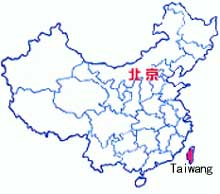Across Taiwan-
Across Asia
Across Pacific & Asia
Across Pacific & Asia
Airports -
40 (2003 est.)
Heliports: 3 (2003 est.) Primary Source: World
Fact
Book
|
| .......................................................................... |
.. |
...........................
.............................................................. .................
|
| ........ |
..............................Building Bridges ACROSS the Barriers.................................... .............................................................................. |
........ |



 primary impetus for industrialization. The trade surplus is
substantial, and foreign reserves are the world's third largest.
Agriculture contributes 2% to GDP, down from 32% in 1952. While Taiwan
is a major investor throughout Southeast Asia, China has become the
largest destination for investment and has overtaken the US to become
Taiwan's largest export market. Because of its conservative financial
approach and its entrepreneurial strengths, Taiwan suffered little
compared with many of its neighbors from the Asian financial crisis in
1998.
primary impetus for industrialization. The trade surplus is
substantial, and foreign reserves are the world's third largest.
Agriculture contributes 2% to GDP, down from 32% in 1952. While Taiwan
is a major investor throughout Southeast Asia, China has become the
largest destination for investment and has overtaken the US to become
Taiwan's largest export market. Because of its conservative financial
approach and its entrepreneurial strengths, Taiwan suffered little
compared with many of its neighbors from the Asian financial crisis in
1998. 